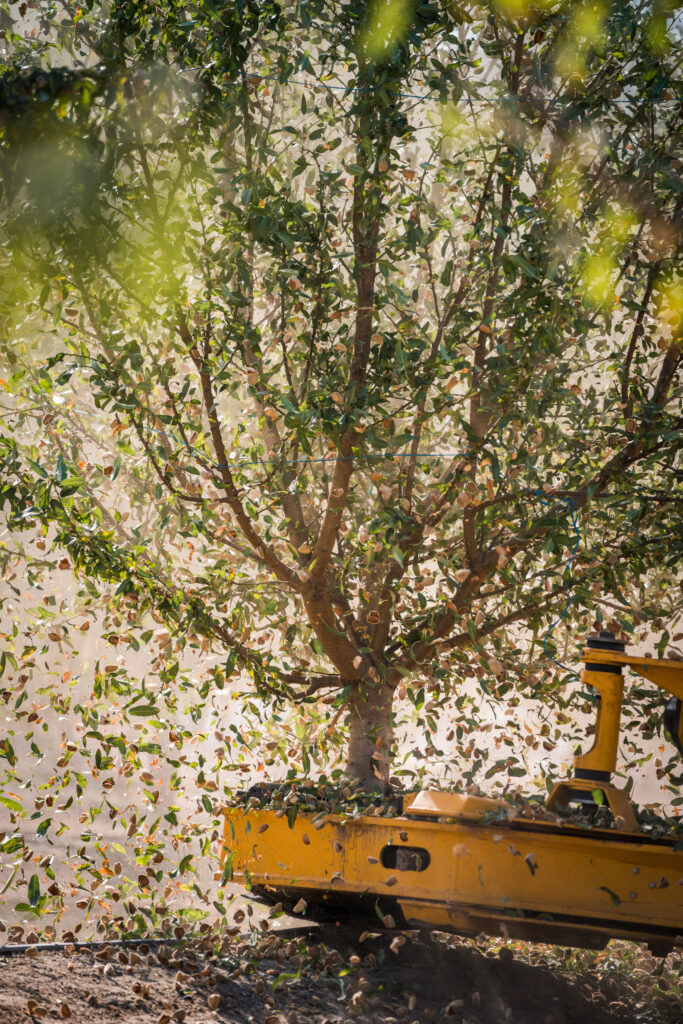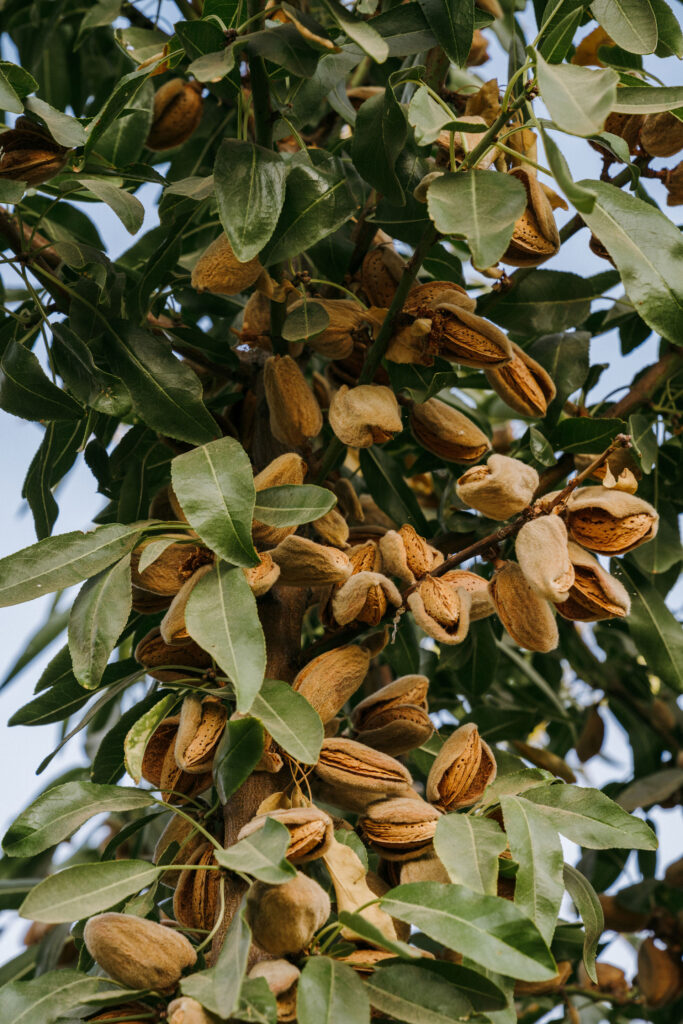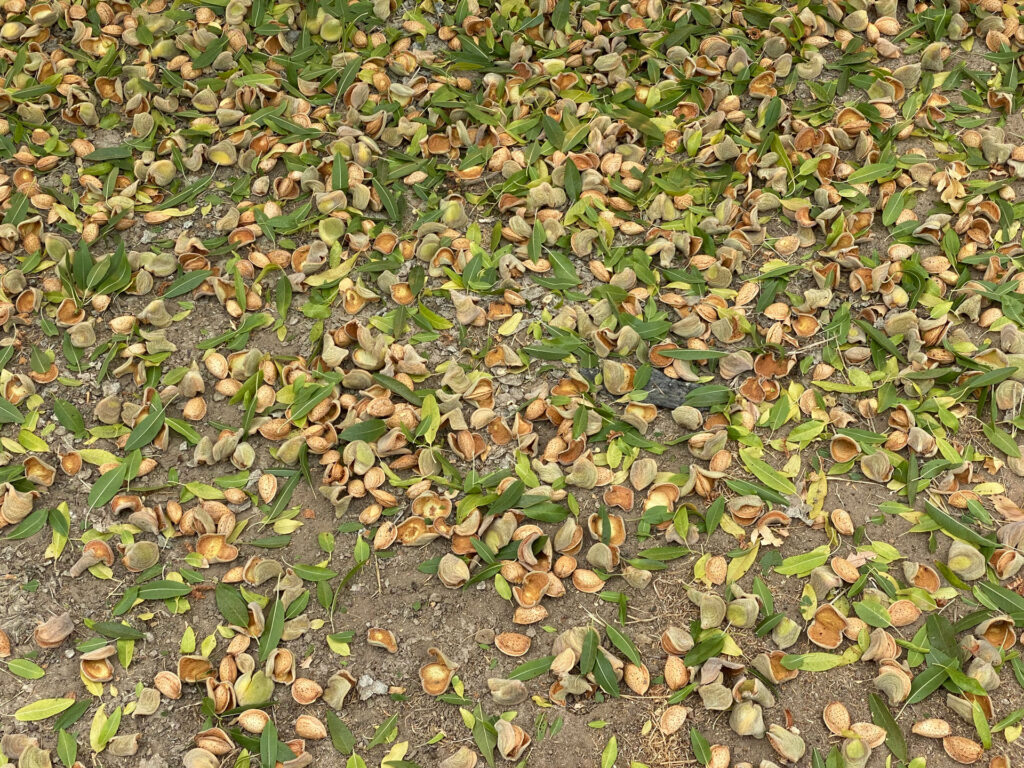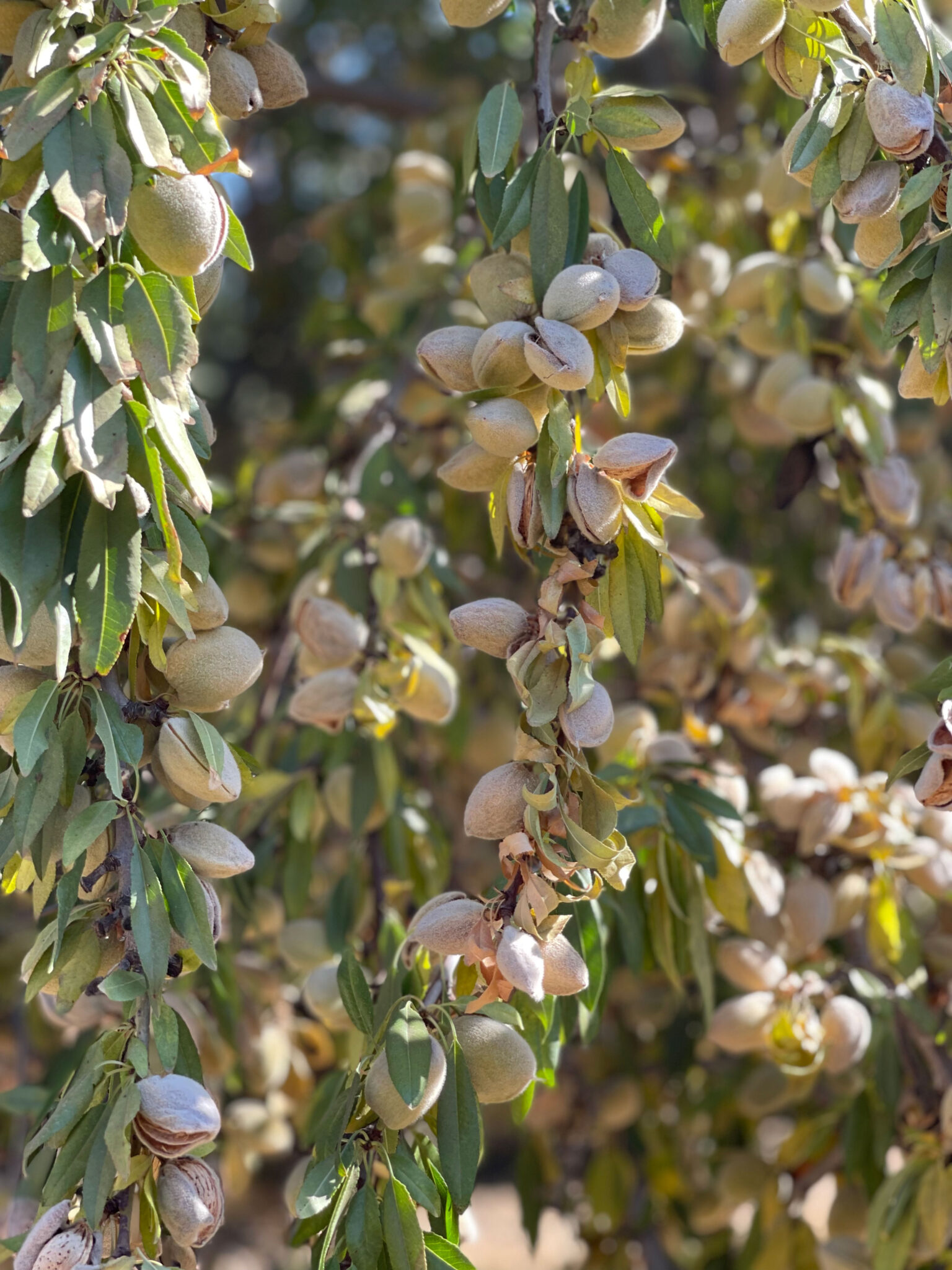The trend toward self-fertile almond varieties continues as a handful of nurseries have new offerings that allow growers to reduce bees needed for pollination and manage orchards more efficiently.
Following on the heels of the successful self-fertile Independence variety, Dave Wilson Nursery has introduced Liberty. Burchell Nursery has launched Pyrenees, the second release in its self-fruitful Summit Almond Series.
And several businesses, including Duarte Nursery, Burchell Nursery, Sierra Gold Nurseries, Fowler Nurseries, Roos Tree Nursery, Tudor Trees Nursery and Agromillora Nursery, will offer Yorizane. From the breeding program of Dr. Craig Ledbetter with USDA-ARS, it is a public self-fertile variety without royalties.
Burchell Nursery
The second release in Burchell Nursery’s self-fruitful Summit Almond Series, Pyrenees matures about two weeks later than Nonpareil.
“Pyrenees has good nut removal,” said Tom Burchell, owner and president. “The thing we like about it is it’s 10 days to two weeks after Nonpareil. The nuts hang well, dry down on the trees and shake well.”
The later maturity should allow growers to spread out their harvests, since Nonpareil, Shasta and Independence all come off at about the same time.
The Pyrenees nuts also are easy to hull, and any mummies left come off readily during winter shaking.
Like Shasta, Pyrenees is self-fruitful, meaning it doesn’t need pollen from another variety to produce a crop. But Burchell still recommended using beehives, albeit at a reduced number, to maximize the yield potential of either variety.
Pyrenees produces a nut with a good seal and a semi-soft shell that can be cracked by hand. Depending on the handler, it could go for the in-shell market, he said. The kernel itself is in the medium-size range and is classified as a California type.
In taste tests conducted by the Almond Board, Pyrenees was one of the top U.S. varieties, coming in just behind an Australian variety. Burchell said it has a mild amaretto flavor that the taste panel found pleasing.
“Pyrenees just had a unique amaretto flavor where everything else we tasted that day was a bland almond,” Burchell said. “This one was different.
“Right now, almonds aren’t sold by flavor. If you put chocolate on them, it doesn’t matter what they taste like.”
But the unique flavor prompted him to name the variety after the Pyrenees mountain range in Europe. After all, marzipan, a paste made from almonds and sometimes augmented with amaretto flavoring, is popular in European confections.
Pyrenees produces a medium-sized, somewhat spreading tree. Burchell said they like to put it on a peach-almond hybrid rootstock to improve tree vigor, which isn’t as strong as the Nonpareil.

He also continues to evaluate test number P16.022, a yet-to-be-released self-fertile variety that will be called Lassen. It matures from seven to 14 days later than Nonpareil. As growers begin to remove Butte-Padre orchards, Burchell said this variety could be a potential replacement if it’s released.
Lassen produces a smallish, plump kernel similar to Ruby in shape, according to Blue Diamond grading information.
In addition, Burchell has a few more experimental self-fertile varieties that aren’t as far along as Lassen that he continues to assess.
Dave Wilson Nursery
Through an exclusive marketing agreement, Dave Wilson Nursery has begun offering Liberty, the second self-fertile almond variety from the breeding program of Zaiger Genetics.
It appears to mature about 10 days to two weeks later than Independence and Nonpareil, said Jereme Fromme, Dave Wilson Nursery vice president of sales and marketing. It also blooms about five days later than Independence.
“That’s obviously helpful in years where there’s a potential frost event,” he said. “The later the bloom is, the less likely you are to have a frost event, and that’s real critical.”
But Fromme cautioned the timeframes are based on just a few plantings around Stanislaus County and what has been observed by the Zaigers over the past 10 years. As more orchards are put in the ground in different parts of the state under different environmental conditions, he said they should get a better idea of bloom and harvest timing.
“I think what we’re going to find, and we find this with all varieties, is until you get critical mass, it’s kind of hard to say,” Fromme said. “Any given year and the growing practices could also change harvest windows.”
If the later timing holds, he said it could allow growers and custom applicators to spread out harvest, making more efficient use of their equipment.

Liberty produces a large, attractive kernel with a good shell seal. How it will be categorized by the industry remains to be seen.
“There are several different factors,” Fromme said. “It really isn’t until you get mass quantities from different regions that you can put them in a category.”
Unlike Independence, Liberty produces a more upright tree similar to Aldrich. Liberty trees are vigorous, and Dave Wilson will offer the new variety on all its commercial rootstocks. The nuts also shake cleanly from the trees, likely due to the more upright architecture, Fromme said.
Liberty is self-fertile and can produce a crop without beehives, although some growers still put a reduced number of hives in their orchards, much like they do with Independence.
Zaiger Genetics hasn’t stopped at Liberty for self-fertile varieties, Fromme said. In the pipeline is one that harvests in early to mid-July.
“With the compaction of harvest, we’re looking at how we can spread harvest out on the early side,” he said. “We can get product running through the huller a little earlier. If you can harvest by mid-July, you’re missing the next or maybe multiple NOW flights.”
Duarte Nursery
Trialed as Y-116-161-99, Yorizane is a public variety released in 2020 that has no royalties or other fees. Any nursery is able to propagate and sell it.
That said, Duarte Nursery in Hughson is promoting the variety as Yorizane “The Gold Nut,” which calls attention to its light gold kernel color. John Duarte, president of Duarte Nursery, said he’s impressed with Yorizane’s clean harvest, a crack-out equivalent to Nonpareil, fewer doubles than Nonpareil and a hull that comes off very easily.
At the same time, windfall hasn’t been a problem in the regional varietal trials that have included the public variety.
In addition, Yorizane has a good seal compared to Nonpareil, reducing navel orangeworm infestations. But the shell itself is thin, making the variety a good candidate for brining and roasting.
Yorizane matures about the same time as Nonpareil. Based on Almond Board crack-out data and kernel dimensions, Yorizane is considered a California variety.

What really caught Duarte’s attention is its reduced hull rot strikes compared to other commercial varieties. This will enable growers to push irrigation and fertility to maximize the variety’s yield potential.
“It’s a champ when you look at all the RVTs,” said Duarte, who has followed Yorizane’s performance for several seasons. “There’s nothing that’s in second place.”
Established by local UCCE farm advisors or university researchers in partnership with the Almond Board of California, the current trials are in Stanislaus, Madera and Butte counties. They were established in 2014 and include 30 commercial varieties and breeder selections.
Duarte said he’d put Yorizane on one of the peach-almond hybrid rootstocks, such as Hansen 536 or Brights, to provide the race car scion with the supercharged engine it needs to maximize yields.
“It’s really fruitful and makes a lot of nice spurs, but it needs a more vigorous rootstock,” Duarte said.
The variety also lends itself to moderately high-density plantings with 21-by-12-foot spacings, for example. Growers who were interested in shake-and-catch harvesting could even go tighter with plantings of 20-by-10 feet, he said.
















